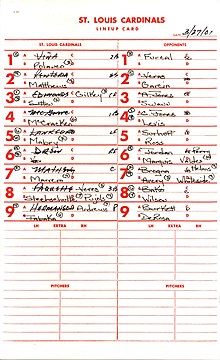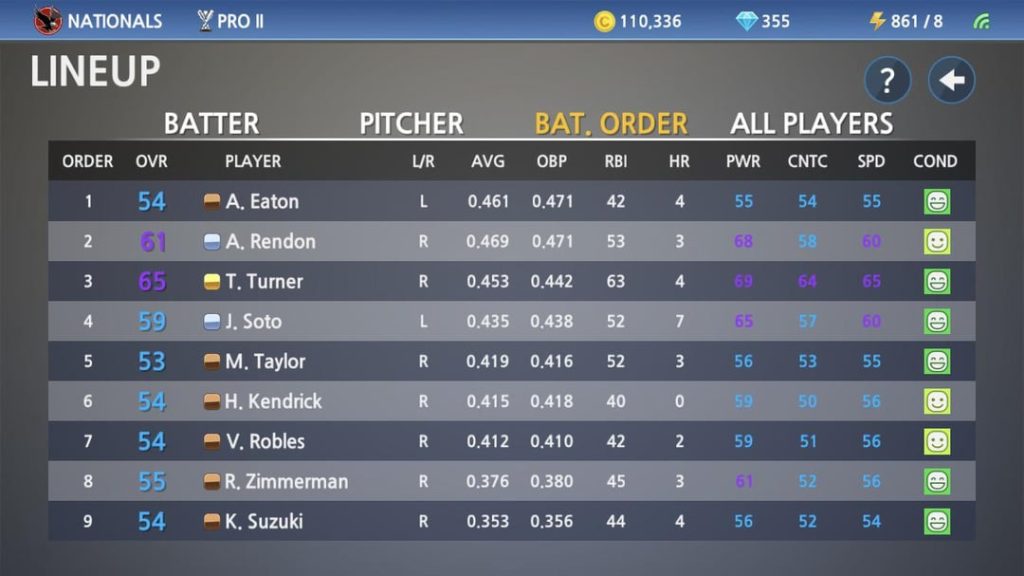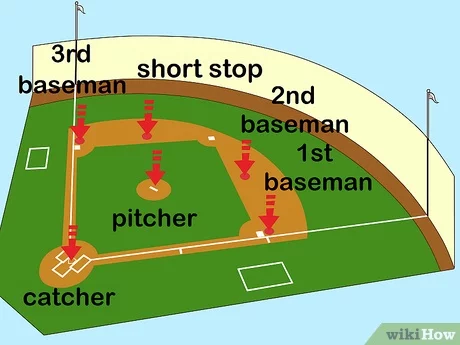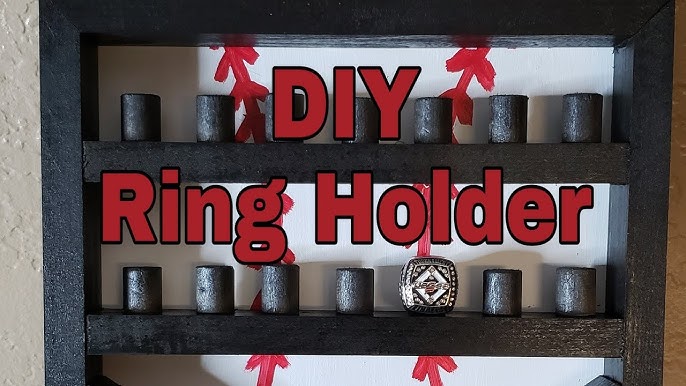Creating a batting order in baseball is crucial for team success. It can make or break a game.
A well-thought-out batting order maximizes your team’s strengths and covers its weaknesses. Each player’s spot in the lineup impacts how runs are scored and defended. Understanding player skills, game strategy, and opponent analysis is key. By making smart choices, you can boost your team’s performance significantly.
This guide will help you learn how to create an effective batting order. Whether you’re a coach, player, or fan, you’ll find valuable insights here. Get ready to dive into the art and science of building a winning lineup.

Credit: en.wikipedia.org
Importance Of A Batting Order
A batting order in baseball is more than just a lineup of players. It is a critical aspect of the game that can influence the outcome of a match. Understanding the importance of a batting order can help you develop a strategy that maximizes your team’s strengths and minimizes weaknesses.
Impact On Game Strategy
The batting order directly affects your game strategy. Placing strong hitters in the first few spots can set the tone early. It allows you to score runs quickly. Conversely, placing weaker hitters at the end can minimize risks.
Consider alternating between right-handed and left-handed batters. This tactic can confuse the opposing pitcher. A well-thought-out order can make it difficult for the defense to anticipate plays.
Boosting Team Morale
A strategic batting order can boost team morale. Players feel more confident when they understand their roles. This confidence translates into better performance on the field.
Every player has a unique skill set. Placing them in the right spot can highlight their strengths. For instance, a player who excels at bunting should be placed in a position where bunting is most beneficial.
Recognize each player’s strengths and weaknesses. It shows that you value their contributions, which can boost their morale.
| Batting Position | Player Role |
|---|---|
| 1st | Lead-off Hitter |
| 2nd | Contact Hitter |
| 3rd | Best Hitter |
| 4th | Power Hitter |
| 5th | Run Producer |
- Lead-off hitter: High on-base percentage.
- Contact hitter: Good at advancing runners.
- Best hitter: Reliable for consistent hits.
- Power hitter: Capable of home runs.
- Run producer: Excellent with runners on base.
Analyzing Player Strengths
Creating a successful batting order in baseball requires understanding each player’s strengths. This analysis is crucial for maximizing the team’s performance. By identifying the key hitters and evaluating base runners, you can craft an effective lineup that capitalizes on each player’s abilities.
Identifying Key Hitters
Knowing who your best hitters are is essential for a strong batting order. Look at their batting averages, on-base percentages, and slugging percentages. These stats give insight into their hitting capabilities.
- Batting Average (BA): Indicates how often a player gets a hit.
- On-Base Percentage (OBP): Shows how often a player reaches base.
- Slugging Percentage (SLG): Measures the power of a hitter.
Place your best hitter, often with the highest OBP, in the leadoff spot. The second and third spots should go to players with a mix of high BA and SLG. This setup maximizes the chances of getting on base and driving in runs.
Evaluating Base Runners
Speed and smart base running are vital for advancing runners and scoring. Look at a player’s stolen base percentage and their ability to take extra bases on hits.
- Stolen Base Percentage (SB%): Indicates a player’s success rate in stealing bases.
- Base Running Ability: Assess their speed and decision-making on the bases.
Fast and smart base runners should bat near the top of the order. This gives them more opportunities to get on base and create scoring chances. Balance your lineup by placing players with high SB% before power hitters. This increases the likelihood of scoring from first base on hits.
By analyzing player strengths, you can build a batting order that optimizes performance. This approach ensures each player’s talents are used effectively, leading to more runs and wins.
Leadoff Hitter Role
The leadoff hitter holds a key position in any baseball team. This player steps up to bat first. Their main goal? To get on base and set the stage for the rest of the lineup. Selecting the right player for this role can impact the game’s momentum. Let’s break down what makes an excellent leadoff hitter.
Setting The Tone
The leadoff hitter sets the tone for the game. They should be fast and strategic. Their actions in the first inning can boost team morale. A strong start can intimidate the opposing team. The leadoff hitter’s job is to get on base, any way they can. Walks, hits, or bunts all work. Speed is crucial. They must be quick to take advantage of scoring chances.
On-base Percentage
On-base percentage (OBP) is vital for a leadoff hitter. This stat shows how often a player reaches base. A high OBP means more scoring opportunities. A good leadoff hitter needs a keen eye. They should know when to swing and when to hold back. Patience at the plate is key. A leadoff hitter must also avoid strikeouts. Keeping the ball in play increases their chances to get on base. OBP is more important than power for this role.
Power Hitters Placement
Placing power hitters in the batting order is crucial. These players have the ability to change the game with one swing. Their placement can determine the team’s success. Let’s explore how to position them effectively.
Maximizing Rbi Opportunities
Power hitters should bat in spots where they can drive in runs. The third and fourth positions are ideal. These spots often have runners on base. The goal is to maximize their RBI opportunities. Having players with high on-base percentages ahead of them is key.
The leadoff and second hitters should get on base frequently. This strategy sets the stage for power hitters. When they come to bat, there should be chances to score runs. This approach can lead to more wins.
Balancing The Lineup
A balanced lineup is vital for consistent performance. Power hitters need protection. This means having a good hitter behind them. The opposing team will then pitch more carefully. It reduces the chances of intentional walks.
Balance also means spreading out the power. Do not group all power hitters together. This makes the lineup predictable. Place them throughout the order. This keeps the pressure on the opposing pitcher. A balanced lineup can sustain rallies and keep the momentum going.
Utilizing Speed And Agility
Utilizing speed and agility in your baseball batting order can greatly impact the game’s outcome. Players with quick feet and swift reactions can turn simple plays into key scoring opportunities. Knowing where to place these players in the lineup can make a huge difference.
Second And Ninth Spots
The second and ninth spots in the batting order are crucial. Placing speedy players in these positions can set the tone for the game. In the second spot, a fast player can advance the leadoff hitter. They can also reach base themselves, creating multiple scoring chances.
In the ninth spot, a player with speed can act as a second leadoff. They can get on base and use their agility to score from different situations. This tactic keeps the pressure on the opposing team’s defense.
Creating Scoring Chances
Speedy players can create scoring chances in many ways. Stealing bases is one key method. A quick player on base can easily steal second or third, putting them in a scoring position.
Bunting is another tactic. A fast player can lay down a bunt and use their speed to reach first base. This puts pressure on the defense and can lead to errors. Every error is a potential scoring opportunity.
Speed and agility also help in advancing bases. A player who can quickly advance from first to third on a single creates a scoring chance. Their presence on base keeps the defense alert and tense.
Strategic Batting Positions
Creating a batting order for your baseball team is crucial. Strategic batting positions can help maximize your team’s scoring potential. Each position in the lineup has a specific role and importance. Let’s dive into some key positions and their strategic significance.
Cleanup Hitter
The cleanup hitter usually bats fourth in the lineup. This player is often one of the strongest hitters on the team. The goal is to have the cleanup hitter drive in runs. This position follows the first three batters, who ideally reach base. The cleanup hitter often has a high slugging percentage. Therefore, power hitters often fill this spot. They can drive the ball deep, scoring multiple runs with one swing. This spot is critical for turning small rallies into big innings.
Fifth And Sixth Spots
The fifth and sixth spots in the lineup are also key. These positions often feature balanced hitters. They can hit for power and average. They follow the cleanup hitter, keeping the momentum going. These players should be capable of driving in runs. But, they should also be able to get on base. This maintains the pressure on the opposing pitcher. The fifth and sixth hitters often face less experienced pitchers. So, having reliable batters here can exploit pitching weaknesses.
Here is a table summarizing key roles:
| Batting Position | Role |
|---|---|
| Cleanup Hitter | Power hitter, drives in runs |
| Fifth Spot | Balanced hitter, maintains momentum |
| Sixth Spot | Runs driver, gets on base |
Remember, each spot has a purpose. Position your best hitters where they can contribute most effectively. Understanding these roles can help you create a strong and effective lineup.
Adjusting To Opponents
Adjusting to opponents is crucial in baseball. A well-planned batting order can make the difference. This section discusses how to tailor your lineup to your rivals. With the right strategy, you can maximize your team’s strengths. Let’s dive into how to adjust to different opponents.
Scouting The Pitcher
First, gather information about the opposing pitcher. Check his stats and recent performances. Notice his pitching style and speed. Is he a right-handed or left-handed pitcher? Understand his strengths and weaknesses. This knowledge helps you set up your lineup to counter his skills.
Use your best hitters against a pitcher’s weak spots. For example, if he struggles with left-handed batters, place your best lefties at the top. This strategy increases the chances of getting on base early. Optimize your lineup to exploit the pitcher’s vulnerabilities.
Adapting To Game Situations
Game situations can change rapidly. Stay flexible and ready to adjust your lineup. If the pitcher is performing well, consider changing your batting order. Move players who can handle pressure to key spots. This ensures your best hitters face the pitcher at crucial moments.
Also, consider your team’s current form. Are certain players hot right now? Boost their confidence by giving them more at-bats. Place them in positions where they can make an impact. Adjusting your batting order during the game can keep the opposing team off balance.
In conclusion, adjusting to opponents by scouting the pitcher and adapting to game situations can significantly enhance your team’s performance. By understanding the pitcher’s style and weaknesses, optimizing your lineup, and staying flexible, you can increase your chances of success on the field.

Credit: en.wikipedia.org
Advanced Metrics
Understanding Advanced Metrics is crucial for crafting an effective baseball batting order. These metrics offer deep insights into player performance. They help managers make data-driven decisions for optimal results on the field. Let’s explore how advanced metrics can shape your lineup.
Sabermetrics In Lineup Decisions
Sabermetrics involves the empirical analysis of baseball statistics. It aims to measure player performance beyond traditional stats. Common sabermetric metrics include On-Base Percentage (OBP) and Slugging Percentage (SLG). These metrics provide a more complete picture of a player’s offensive value.
Consider using a table for better clarity:
| Metric | Description |
|---|---|
| OBP | Measures how often a player reaches base |
| SLG | Measures power by calculating total bases per at-bat |
Using these metrics, managers can identify players who excel at getting on base or hitting for power. This helps in strategically placing them in the lineup.
Leveraging Data For Success
Data analysis is a powerful tool in baseball. Managers use it to assess player strengths and weaknesses. Advanced metrics provide a detailed view of a player’s performance. This data helps in making informed lineup decisions.
Consider these steps to leverage data effectively:
- Collect data on player performance
- Analyze metrics like OBP and SLG
- Compare players to identify the best fit for each spot
By leveraging data, you can create a batting order that maximizes team strengths. This approach increases the chances of scoring runs and winning games.
Remember, advanced metrics are not just numbers. They are tools that provide valuable insights. Use them to build a winning lineup!

Credit: www.dickssportinggoods.com
Frequently Asked Questions
How Do You Create A Baseball Batting Order?
To create a batting order, consider player skills and strengths. Balance power hitters and contact hitters. Place speedy players at the top. Ensure a mix of right and left-handed batters. Adjust the order based on game situations and opponents.
What Is The Best Batting Order Strategy?
The best strategy is balancing power and contact hitters. Place consistent hitters at the top. Use power hitters in the middle. Speedy players should lead off. Tailor the order to exploit the opponent’s weaknesses.
Why Is The Batting Order Important?
The batting order is important because it maximizes scoring opportunities. A well-structured lineup can exploit pitcher weaknesses. It balances player strengths and can influence game momentum. Proper order increases the chances of winning.
How Do You Decide Batting Order Positions?
Decide positions by evaluating player statistics and performance. Consider on-base percentage, speed, and hitting power. Place consistent hitters at the top. Power hitters should bat in the middle. Tailor the order to the team’s strengths.
Conclusion
Crafting a batting order takes thought and strategy. Keep player strengths in mind. Balance power hitters with contact hitters. Consider speed for base-running advantages. Adjust based on game situations and opponents. Practice different lineups during scrimmages. Get feedback from players and coaches.
Stay flexible and ready to adapt. A well-planned lineup can impact game success. Focus on team chemistry and performance. Enjoy the process and see your team thrive.



